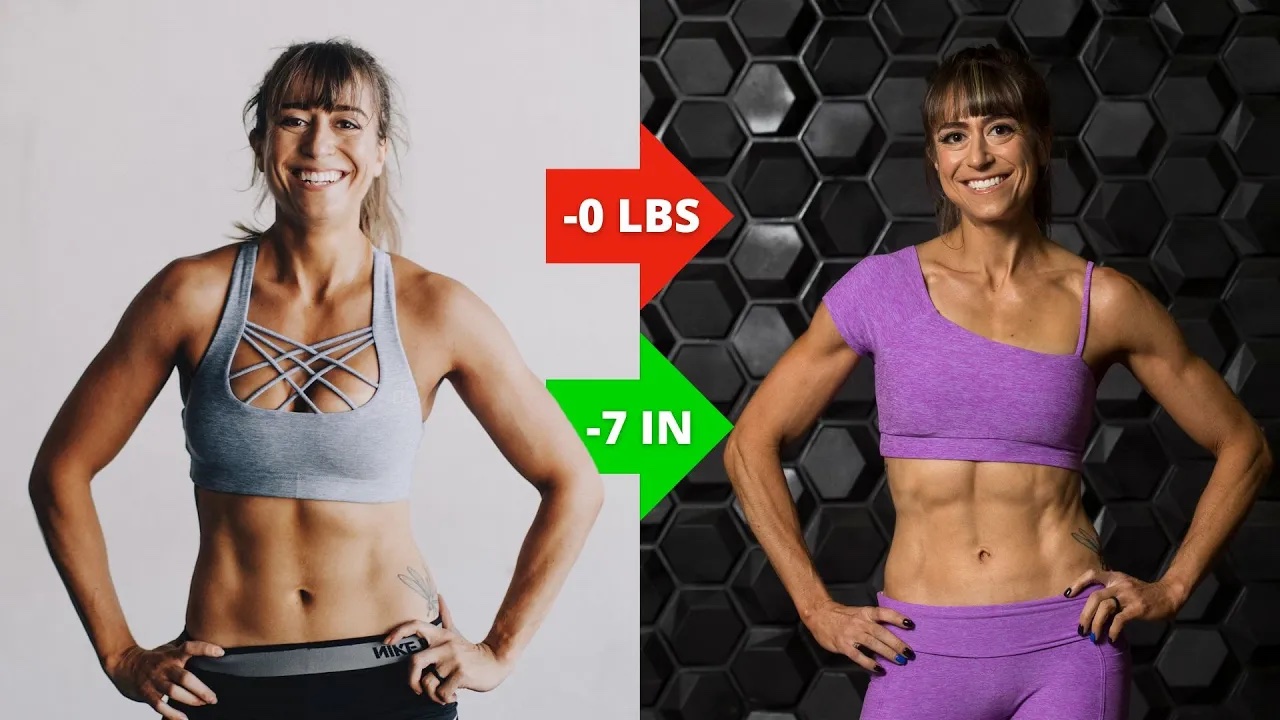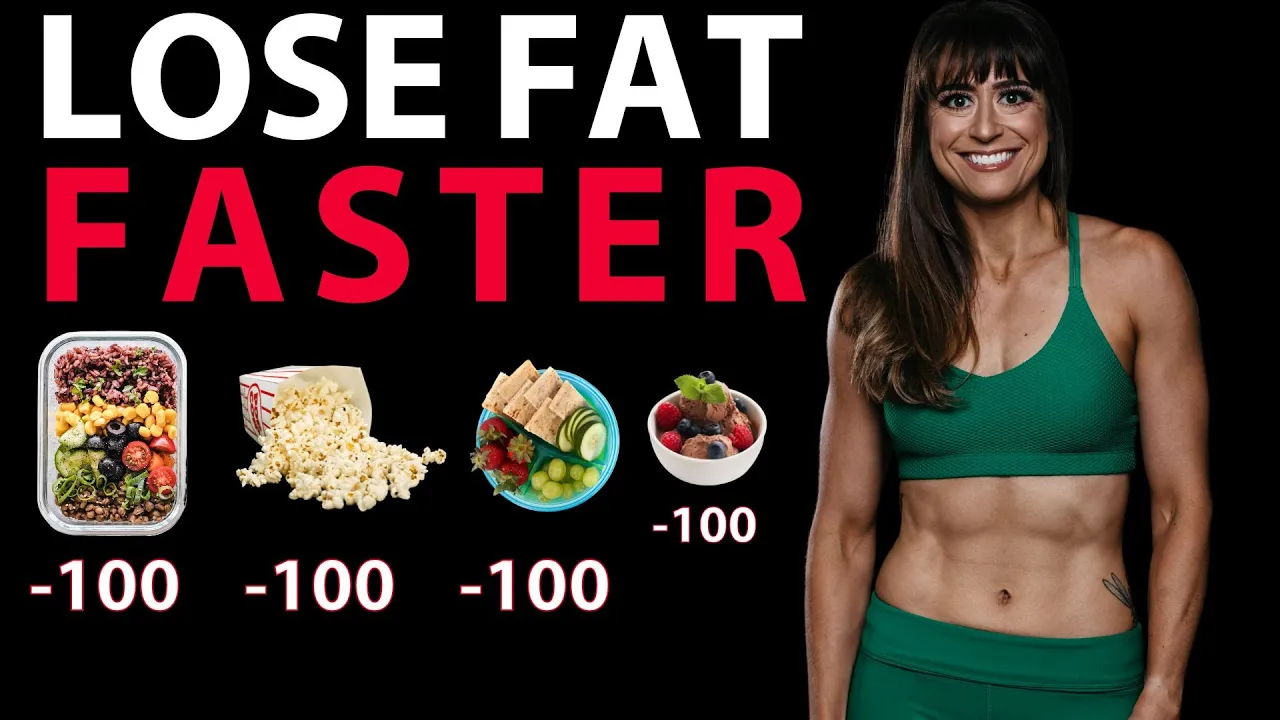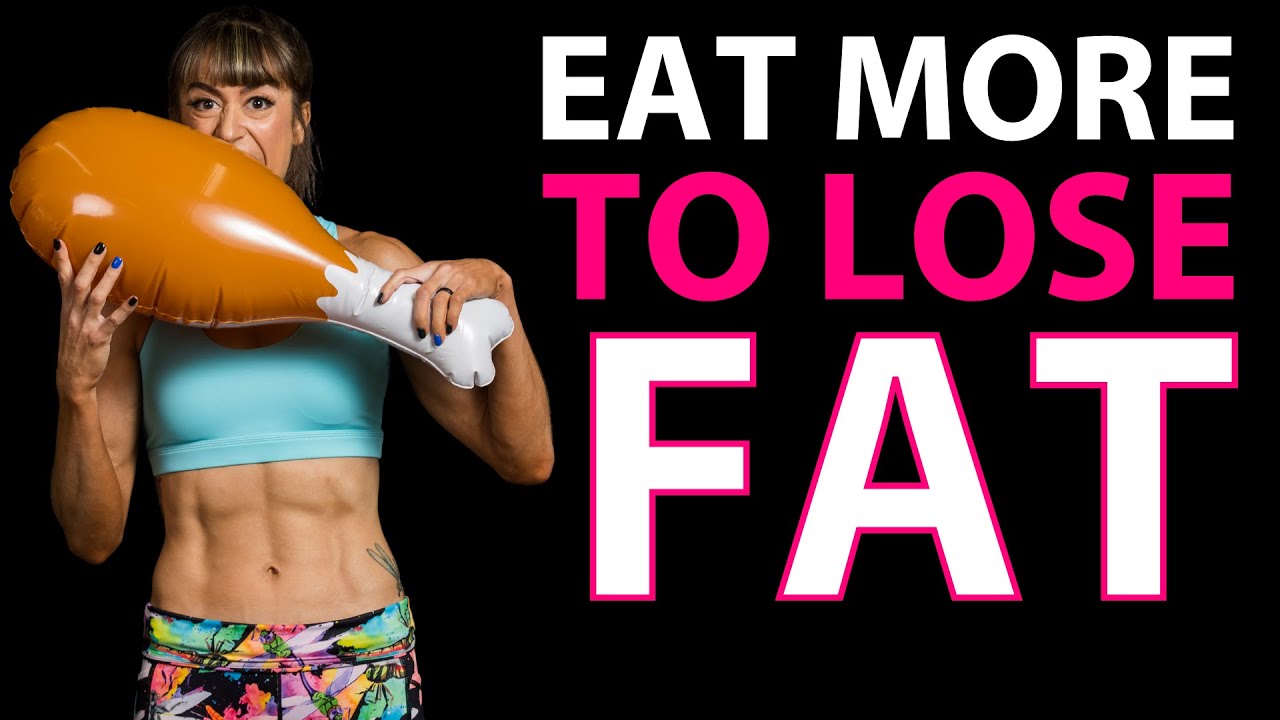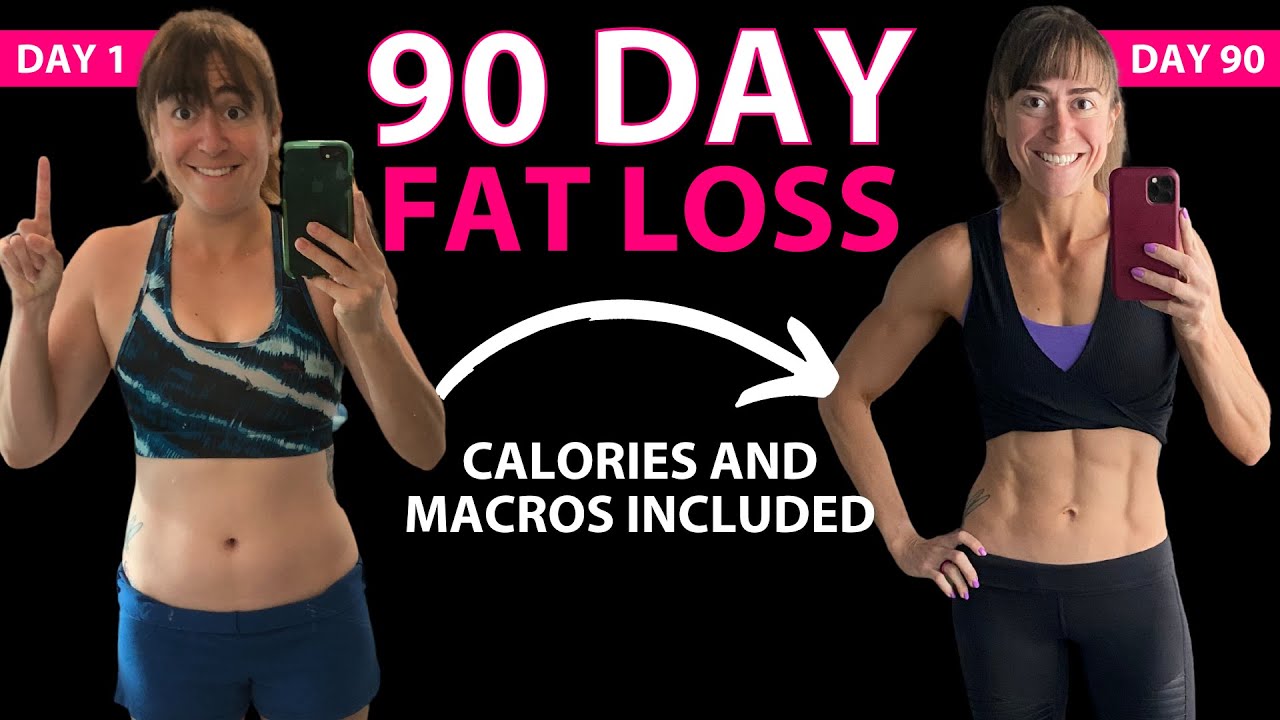Macro Tracking For Beginners – 7 Tips To Make It EASY
In this video blog, I’ll cover 7 common macro tracking struggles and how to overcome them.
Check out the full video or transcript below.
And if you’re just wanting to learn to track macros, and even feeling overwhelmed by the idea of logging and measuring everything, check out my Metabolic Shred!
I include 3 different macros methods to help you start adjusting those portions, even if visual tracking methods work better for you to start!
–> Learn More About The Metabolic Shred

Transcript (please excuse any typos!):
I know I should be tracking macros, but it’s just so overwhelming, so tedious.
I mean, how do I log family meals?
How do I log meals out?
Tracking macros can seem very overwhelming to start, and I have lots of clients that rebel against ever doing it because there are so many details it seems like there are to learn.
And I get it; it was one thing that I avoided for the longest time.
However, I realized I was keeping myself stuck falling for fat diet after fat diet because I was falling for the oversimplifications that were actually making things overly complicated.
Let me say that again because I know that’s really weird, but the oversimplification that was making things more complicated.
Because with all these diets with a label that are restricting specific foods, they make it very simple to do, right?
You just cut out this one food, and you’re going to see results.
However, in cutting out that one food, we might see progress for a little bit, but we don’t know why.
And then when we don’t want to cut out that food any longer, we don’t know how to make the changes that will actually pay off.
So that’s why tracking macros is so key.
It’s hard to start; it can be overwhelming; there is a learning curve.
But ultimately, what gets measured gets managed.
The more that you learn to track macros, the more control you get over your diet to be able to adjust as your needs and goals change over time.
So I’m going to go over 7 things that might be a little confusing to track and log and show you how you can actually do this to see results.
Number one, should we count net carbs or all carbs?
This is an interesting debate, and if you have specific health concerns, you may only track net carbs.
But if you are looking to lose fat, see body recomposition happening, you need to track all carbs.
Your calorie deficit or surplus is based on the fact that you are consuming whole natural foods, which would have fiber in them.
So by only tracking net carbs to be able to eat more carbs, you’re ultimately potentially throwing yourself out of a calorie deficit, which would be key if you want to see that fat loss occurring.
Net carbs also really isn’t a regulated term, so it’s very much used to market specific products nowadays.
And I love some of the products that are net carbs, but these tortillas say they have 70 calories, and that’s based off of the fact that they can do that based off the net carbs actually listed.
But they truly have 123 calories, and I bring this up because if we’re subtracting those calories, we might be eating out of the deficit we’ve created because again, we’ve set that deficit assuming that we’re eating whole natural foods which do contain fiber to them.
So you’re not going to be subtracting that necessarily with your apples or other things that aren’t with labels.
So you want to make sure that any product with a label that is subtracting that net carbs, you’re conscious that the calories are being impacted by this.
Same thing goes with this bar, not as bad, but it says 200 calories, it’s actually 22 something that’s going to potentially lead to us throwing ourselves out of a deficit, especially the more net carb type products that we’re consuming.
So it’s really key that we don’t fall for the net carb marketing term but realize that this is allowing them to list lower calorie counts and that our calorie deficit is truly set based on the fact that we’re consuming whole natural foods, which would have fiber.
If you’ve set your deficit not accounting for net carbs, you do not want to just only count net carbs, as that can throw you out of the deficit which is so necessary for fat loss.
Be aware that this is a marketing term that is used.
All carbs count.
I know that’s not what you want to hear sometimes because you want to be able to eat more carbs, which tastes really good.
But if we want to see results, we have to make sure that everything is dialed in correctly.
Number two, to make macro tracking a little bit easier…
Should you weigh your food, your produce, everything cooked or raw?
The short answer is it doesn’t matter, and that’s great for us because it means that we can make a lot of different things work.
Ideally, yes, you are potentially weighing your stuff raw; that gives the most accurate measurement, is very easy to do.
But sometimes we’ve cooked a meal and we’re having leftovers.
Sometimes we’re bulk prepping, and we can’t necessarily weigh out each portion ahead of time.
And the great part is we can easily still weigh out and be accurate with cooked foods. We just need to make sure that whatever ingredients we select in our food tracker match up to what’s used.
So if you select a raw ingredient because you use raw, that’s perfect.
If you select a cooked ingredient, you want to make sure that you select baked, grilled, whatever it is and make sure that it’s the same cooked ingredient because if you select raw when cooked, there is a change in what is going on there.
It’s really key that you select the correct ingredient to complement because 4 oz raw chicken is going to be 3 oz cooked, and that change is going to impact the macros and the weight that you’re going to need to hit your macros.
So just make sure that whether you’re weighing it cooked or raw, you’re selecting the correct ingredient in your tracker, but really you can make either work based on what you need.
If you’ve cooked meal prep, and now you’re pulling chicken out of the fridge and you’re putting it on your salad, that’s easy to just do the cooked meat.
If you’re cooking raw, you can easily divide up the portions and even meal prep those into different containers so you already have it weighed out.
But don’t stress; you can do either one.
Number three, let’s talk about alcohol.
So if you drink and you want to include your glass of wine, your cocktail on occasion, this is how you can log alcohol into your food tracker.
I do just want to make a note that even though you include it and it logs the calories, and I’m going to show you how to log the grams of the macros, it still can impact the rate at which you see results if you’re really striving for the best weight loss, fat loss, even body recomposition.
You may want to consider eliminating alcohol for a period of time because it does slow the process even when you’re logging it, taking it into account.
So alcohol comes with a certain amount of calories.
Let’s just say 100 calories.
But because it is its own macro at 7 calories per gram, it will show as empty calories in your food tracker.
That means what you need to do if you’re tracking macros is decide how you’re going to allocate those calories.
So if you’re logging alcohol, you’d ideally like to take it out of protein because we usually want to eat less protein and more carbs and fat, especially when we’re drinking. But you can’t take it out of your protein.
Ideally, you’re going to take it out of your fat grams for the day or your carb grams for the day, depending on what your ratio is.
I say fat because it slows the digestion of fat specifically, and it really inhibits fat loss.
Ideally, we’re going to be taking it from our fat calories from the day. However, if you are on a lower-fat ratio, you might subtract it from carbs.
So when you have those calories from that drink that you’re including, the 100 calories that aren’t logging as anything specifically, you’re going to take those 100 calories and divide it by either nine for fat or four for carbs.
That’s going to give you the grams of each macro that you have to add in.
You then will want to create a food with the calories and allotting those calories to the specific fat or carb that you’re putting them towards.
That will help you track macros and still take away from your carb intake or your fat intake for the day so you hit those ratios very nicely.
The next thing I’m going to go over is meals out.
And this is not only meals out at restaurants but also parties, different family events where you might be eating where someone else’s cook.
It seems overwhelming to log these things because sometimes you can’t be exact; you don’t know exactly what recipe they use, how they cooked it.
But the great part about a lot of restaurants is they have nutritional information online, and if they don’t, a restaurant similar does.
So you can always create a food off of that. I also like to Google common recipes because if I know someone’s cooking, I know they’re going to be using something that’s probably a recipe I can slightly find online, and off of that, I can use hand portion guides and get pretty close in terms of my tracking.
But you can always create a food off of a recipe that you find there, and that way you have macros that are close enough to hold you accountable because part of logging restaurant meals and meals out is that it helps us know that we deviated and had something that was potentially different than what we usually have.
And if you’re traveling for work, finding healthy restaurant options at places like Chipotle or Chick-fil-A or different things like that may not be the quality we usually want, but it can be really helpful because it can keep us on track hitting those macros.
Anyway, we can’t always use the thing, “Well, I’m traveling, so, you know, whatever, I’m going to throw my macros out the window,” because if we constantly do that, we’re never going to see results build.
So if you are traveling for work, make sure to get some go-to options and even log them ahead of time to see how they can fit in.
But if you can’t find the exact nutritional information for a restaurant, make sure that you’re looking up a similar recipe, entering that just to hold yourself accountable, even naming it the restaurant if you go there more often so that you have that already pre-planned so you can sort of plan the rest of your week around it based on how you respond to it.
So just got done with the Starbucks drive-thru.
Now, if you’re going to Starbucks, the great part is they do have nutritional information, and Starbucks really wants this on their website. However, if you can’t find something at your local coffee shop or cafe that’s similar, this could be a great option in terms of what you log because it’s probably not as healthy as what you make at home.
Generally, they use extra oils, different things like that. But I could sort of look at this and be like, okay, what’s on this? I know it’s cheese, bacon, it’s double bacon, it’s the egg, and then it’s sort of a croissant-like sandwich.
So I know that if I go to a local cafe using the nutritional information from Starbucks could be a really great way to go.
I often get asked, should I log sauces, especially ones that have very few calories?
And the simple answer is yes.
Those five calories might not seem like a lot in your mustard, but they add up over time, and often our portions aren’t that single serving that we think they are.
And if we’re trying to create a smaller calorie deficit, these things can really impact the deficit we’re actually in, especially if we are including alcohol or meals out.
But I wanted to highlight some portions and how many calories are actually in the sauces we’re including.
This serving of ranch dressing right here is 150 calories. And maybe this says something about how much I dislike salads and feel like the rabbit food at times, but that would not be the only amount that I would put on my salad. I would load it down.
So I’m going to be easily packing in more than 150 calories with the salad using that dressing. And yes, I can get lighter dressings, which might be a swap that you make.
But you want to log that because 150 calories, especially if you’re doing that multiple times over the week, it’s really going to impact the results that you’re getting.
And by measuring and weighing it out, you might even realize, hey, I’m not eating that entire 150 calories so I can be spending those calories elsewhere.
Now, ketchup, 20 calories for the serving.
I don’t know about you, but if I have fries, if I have potatoes, I use a lot more ketchup than that. So maybe my portions are distorted.
Maybe yours are finding yours are too.
But that’s 20 calories for not that much. Even this amount of mustard, that’s five calories, and you’re like, oh, five calories is easy.
But I don’t know about you, but again, I don’t think I use that little mustard when I’m making my sandwich.
And even if you are, if you’re making that sandwich every single day, and then you’re adding some salad dressing onto your salad every single day, and you’re using that ketchup multiple times a week, all these little calorie amounts add up.
And I also bring this up because I think our portions can easily get distorted on things like peanut butter.
Anybody else have a problem with just that one serving, and a serving gets a whole heck of a lot bigger when they want it?
That tends to happen.
So by making sure that we’re measuring and weighing everything, we’re not going to let those little calorie amounts add up in a way that can really sabotage and derail us because 5, 10 calories over the week can throw us out of that calorie deficit, especially when we are doing other things.
So make sure you’re logging and measuring everything to get the correct portions to really see an accurate picture of what you’re doing because too often we just say, oh, the macro ratio isn’t working, oh, the calories aren’t working, but really it’s things that are off in our diet that aren’t allowing us to hit the numbers consistently, and those inconsistencies are what are adding out.
Log all those sauces even if it says it only has 5 calories.
So now let’s talk about the impact that cooking has on those protein sources and whether or not you should count the fats and marinades that you’re using cooking oils.
Marinades, the fat that cooks out of meat – do we have to log all of that?
The simple answer and the easiest answer is yes.
Often when we don’t want to log something, it’s because we want extra calories and extra macros to use elsewhere, and I totally get it. I try and cheat wherever I can.
But the more accurately we measure everything, the more we log everything, the better our results are going to be, and the more we’re going to have the power to make adjustments where we need.
Because the thing is, with olive oil, even though it’s being spread over the entire pan, a lot of it isn’t being cooked in; it is being cooked over the entire portion of meat.
This is 120 calories, and that is a lot of calories that can add up over the course of a week, especially if we’re constantly cooking with it. Now you might think, “Okay, well, I’m going to use a spray instead.”
A spray for zero calories is 1/4 of a second.
I don’t know about you, but my spray is not that precise.
That doesn’t even get anything in there. I’m pretty sure that was like 1/4 of a second.
My spray is probably like 10 seconds, just kidding, but it’s a lot more than we think.
So that is not fully going to save you, and we want to be conscious that even though it lists zero calories, it’s going to potentially add up. So we want to be conscious of that even if we’re not logging it, but we want to note that the oil we are cooking with is going to add calories, and we want to track it.
Marinades are the same way.
Even though all of it is not going to be cooked in, you might not use all of it.
You want to log it if you want to be extra super precise, and I can tell you that I have not found the need to be. I will just count all the marinade and just log all of it.
But if you really want to make sure that you’re only getting the portion you’re eating, if you weigh the marinade beforehand and then you weigh the marinade after you’ve marinated the meat and then you include that, you can find what was truly used in the recipe.
But you want to make sure that you are logging everything, and yes, some fat is going to cook out of the meat that you are including, but do not try and subtract it.
The more you just take everything and make it as easy as possible to and don’t overcomplicate things.
And again, we often overcomplicate things that we want to cheat on to get more calories and macros to use elsewhere.
The more we’re going to create deviations and inconsistencies in our log. So cooking oils, marinades, the fat that cooked out – just log all of it. It makes it a lot simpler and helps you be more accurate.
Let’s talk about casseroles, family meals, soups – those dishes that you might be sharing with the family.
So it might seem a lot easier to track if you’re a single person making a single meal, and when we have those casseroles or family dishes that we’re sharing, it can be a little overwhelming to know how to create a portion size.
What you want to do is set yourself up for success by entering the full recipe into your tracker and saving that, because then you don’t have to enter it every time.
But let’s just say you’re making a casserole.
If you’re making a soup, this works as well.
But if you have your casserole dish, you can weigh it beforehand and get the weight.
Find out the weight of it, and then make sure it’s tared, that’s great, or I can take it off and then find the weight.
Or if you don’t tare before and you can put it on – okay, so I know the weight of this, which is great.
So when I put this back on after I’ve made something, so let’s pretend I’ve actually put this in the oven, made a nice casserole, and it looks really delicious and filling.
Then I would get the weight of the casserole now with this in there.
So I know the weight of the casserole.
I might have to subtract out the dish itself if I wasn’t able to tear it because I wasn’t pouring it into something.
So if the dish is 477, I would now know that this is the total dish.
I would then take that number and divide it by six.
That would give me the size of the portion.
So then what I could do is tare it right here and then even just cut out my portion and then start to weigh out what a sixth of this dish was.
Once I had that, I would make sure that I entered the recipe into my tracker and then I would enter how many portions to divide it by so that I could get the macros for each serving.
Make sure when you enter your ingredients that they’re correct.
The great part about this is it saves it for future use. So every time you make this recipe, you can easily reuse it.
Now, if you have something that’s a little bit more based on people choosing their own portions and you can’t divide it as evenly, what you can do is instead of dividing it by the six servings, you can actually make a serving just a single gram or ounce, and that way you know what the macros are for each gram or ounce to be able to take a portion at a time and even vary your portion size more easily.
So if you have hungry kids at home or other family members who are just taking their own scoops and you know you now have 50 grams left, you know the exact macros on it.
But you don’t have to overcomplicate these things or get stressed out when you have family dishes.
Just weigh the entire recipe, divide that weight so you get your weight of your serving, and then you can measure that out.
I hope those tips really helped.
I know that it can feel overwhelming to start to track macros, but the more you even just start by logging the average day, don’t even worry about making adjustments, but just start to weigh and measure everything, get that accurate picture, the better off you’re going to be at making adjustments because you’re going to be able to meet yourself where you’re at.
Just remember, it’s really easy to get caught in that fat diet cycle, falling for something that’s oversimplified.
But ultimately, that overcomplicates getting lasting results because we’re not truly learning what we need.
So embrace the learning process of macros, reach out if you need any help, and comment if you have any questions about these seven tips.






